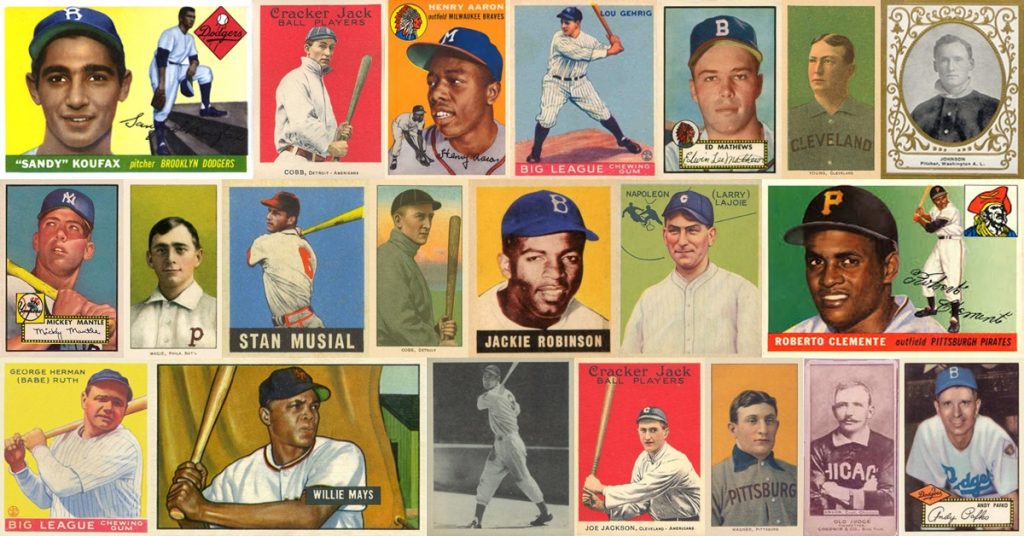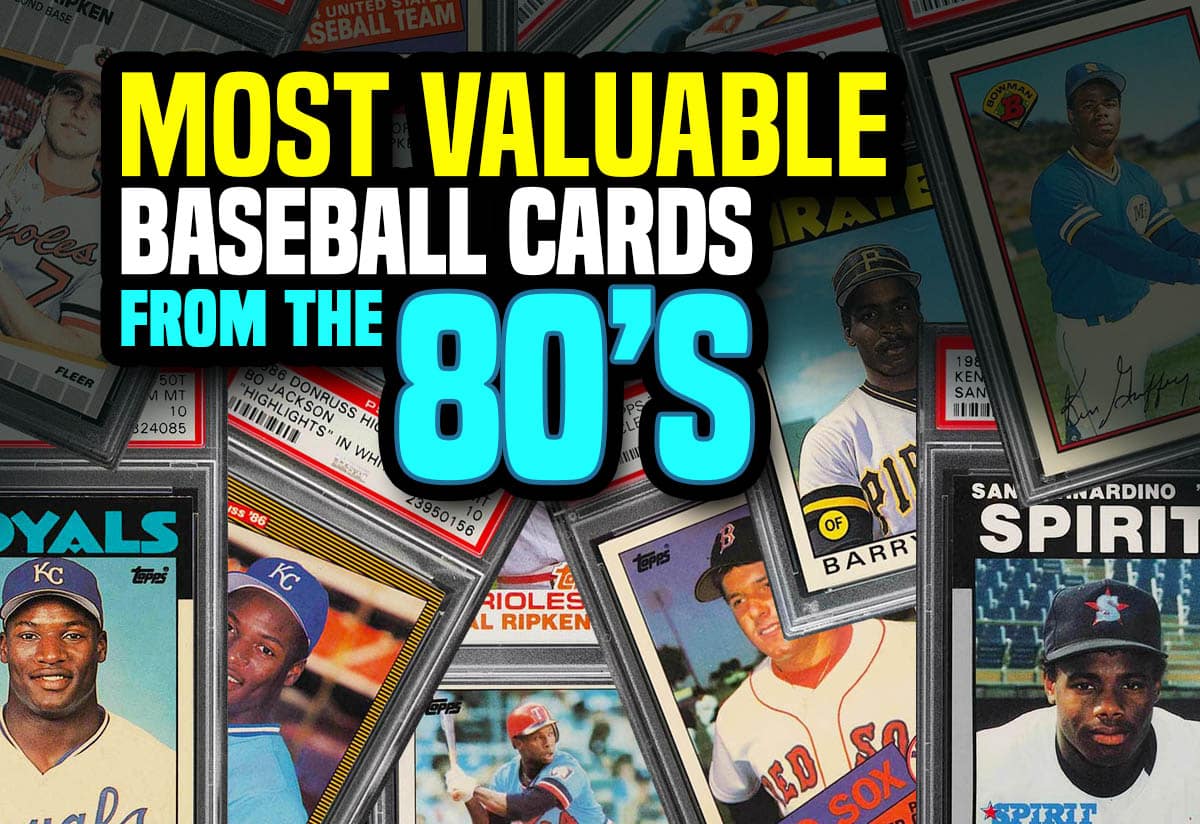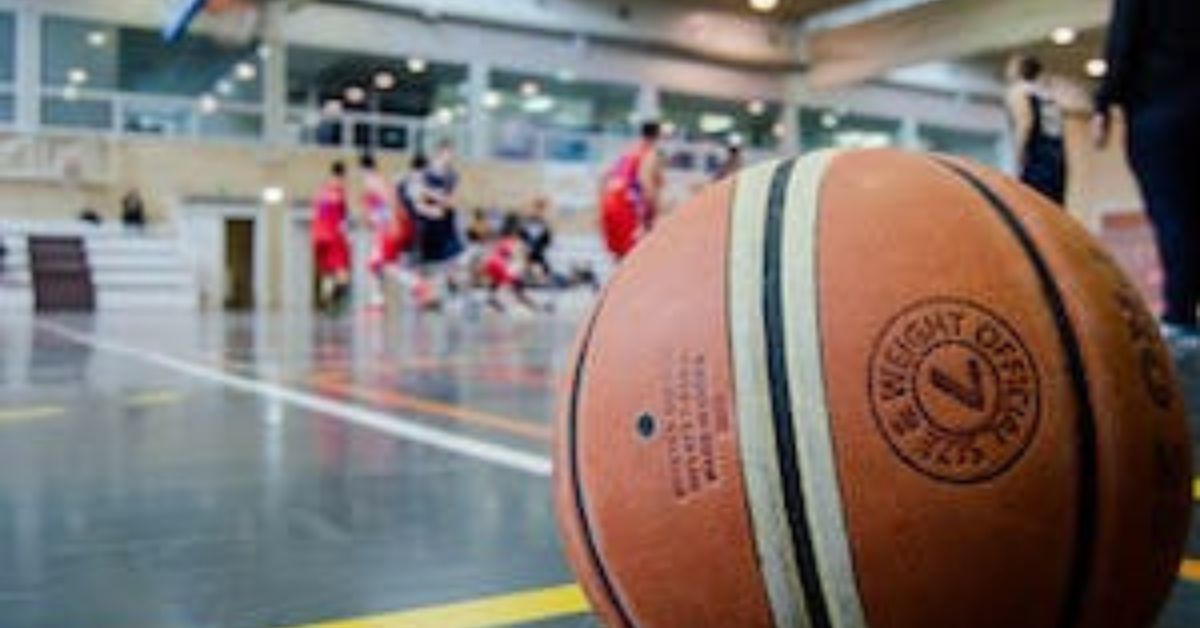How to Tell If Your Baseball Cards Are Worth Money
To determine if baseball cards are worth money, check their rarity, condition, and demand on collector platforms. Research completed sales on eBay or consult price guides like Beckett’s for valuation insights.
Baseball card collecting is a hobby that turns into a lucrative investment for many enthusiasts. The value of a baseball card hinges on various factors, including its age, the player featured, and scarcity. Cards in mint condition usually fetch higher prices, as do those of hall-of-fame athletes.
Genuine collectors always keep an eye out for limited editions and error cards, which can spike in worth unexpectedly. The internet provides a wealth of information through auction sites and collector forums where you can gauge the current market’s interest in specific cards. Engaging with the baseball card community online also helps in understanding trends and identifying cards that are likely to appreciate in value.

Credit: www.oldsportscards.com
The Rarity Factor
Baseball cards worth money share one trait: rarity. Understanding a card’s rarity reveals its potential value. Rarity comes from age and scarcity, and whether it was a limited edition release. Here, we dive into why some cards hit home runs in value whilst others remain benchwarmers.
Age And Scarcity
Old cards often mean big bucks. But age alone doesn’t score a home run. Consider these points:
- Production era: Pre-1970s cards are typically rarer.
- Condition: Mint condition increases value exponentially.
- Survival rate: Fewer surviving cards boost individual value.
A combination of vintage and pristine condition can slingshot a card to top-dollar status.
Limited Edition Releases
Limited editions can be a collector’s jackpot. These cards are special from the start:
| Feature | Impact on Value |
|---|---|
| Short print run | Raises demand among collectors |
| Unique designs | Attracts attention, differentiates from standard issues |
| Signatures or patches | Adds a personal touch that can skyrocket value |
Seek out cards with these golden features; they often come up winners in the valuation game.

Credit: www.history.com
Player Popularity And Success
The value of baseball cards can often hinge on the players they represent. Two key factors are: how popular the player is and their success. A beloved player with an illustrious career can make a card jump in value.
Hall Of Fame Status
Induction into the Hall of Fame is one of baseball’s highest honors.
- Cards of Hall of Famers soar in value due to their legendary status.
- Induction announcements can cause immediate price jumps.
- Collectors seek these cards as they represent the crème de la crème of baseball history.
Hall of Fame members are among baseball’s elite, making their cards treasured keepsakes for fans and collectors alike.
Record Breakers And Milestones
Accomplishments and records set by players make their cards highly sought after.
| Player Achievement | Impact on Card Value |
|---|---|
| Season or career records | Significantly increases worth |
| Specific game milestones | Can spark interest among collectors |
| Rookie year highlights | Boosts rookie cards’ appeal |
Record-breaking accomplishments immortalize a player’s performance, enhancing the value of their cards dramatically.
Card Condition
Card Condition plays a crucial role in determining the value of baseball cards. A pristine card often commands sky-high prices, while even small imperfections can considerably reduce a card’s worth. Understanding the intricacies of card condition helps collectors and sellers make informed decisions about their baseball card investments.
Grading Systems Explained
Card grading provides a standard for evaluating the condition of a baseball card. Professional grading companies assess cards and assign a score on a scale — usually from 1 to 10 with 10 being the best condition.
- PSA (Professional Sports Authenticator)
- SGC (Sportscard Guaranty Company)
- BGS (Beckett Grading Services)
Cards with higher grades are more desirable and, therefore, more valuable.
The Impact Of Wear And Tear
Wear and tear can greatly affect a card’s appeal. Common issues include:
- Creases: Folds or wrinkles damage the card’s structure.
- Corner wear: Bent or frayed corners reduce the card’s grade.
- Surface wear: Scratches or scuffs on the card’s face.
- Edges: Chips or discoloration along the card’s borders.
A card with no wear and tear might achieve a perfect grade, increasing its market value significantly.
Historical Significance
Diving into the past reels out a treasure trove of baseball cards holding immense value. Collectible pieces from eras long gone often fetch high sums, with their worth etched in history. This section explores how historical significance can turn old baseball cards into coveted artifacts.
Era-specific Demand
The allure of baseball cards is often linked to their era. For instance, cards from the tobacco advertising phase or pre-war period claim steep prices. Key trends define era-specific demand:
- Cards from the 1900s-1920s are rare and sought-after.
- The 1933 Goudey collection is a gem for collectors.
- Post-war cards, like the 1952 Topps Mickey Mantle, drive significant interest.
Noteworthy Events
Value spikes often align with pivotal moments in baseball history. Cards tied to these milestones are prized:
- Player debuts: Rookie cards of Hall of Famers hold premium significance.
- Winning streaks or record-breaking games can push a card’s worth higher.
- Anniversary editions or retirements often see an increase in demand.
Always consider these events when evaluating the worth of a baseball card collection.
Market Trends
Knowing if your baseball cards are worth money involves understanding market trends. Trends in the baseball card market show what collectors currently want and help predict future value.
Current Demand
The value of baseball cards hinges on demand. Rare cards, star players, and vintage collections often fetch the highest prices. Key factors impacting demand include players’ popularity, card condition, rarity, and historical significance.
- Popular Player: A card’s value increases if the player is in high demand.
- Mint Condition: Cards in excellent condition are more valuable.
- Rarity: Limited edition cards or those with production errors are often sought after.
Future Value Predictions
Predicting the future value of baseball cards is challenging but important. Cards that are currently popular might remain valuable if they represent historical moments or record-breaking achievements.
- Analyze past sales to see which cards appreciate over time.
- Watch for young players who are starting to make their mark.
- Consider the historical impact of the player or the card series.
Authentication And Verification
Collecting baseball cards can be thrilling. Knowing the value of your cards is key to a great collection. The first step is Authentication and Verification. This process tells if your baseball card is the real deal. Let’s dive into how experts confirm a card’s authenticity and its true worth.
Professional Appraisals
Professional appraisals are essential for valuing baseball cards correctly. Appraisers check the card’s condition and history. They use tools and guides to determine the card’s market value. An appraisal involves these steps:
- Examination: Check for card quality and defects.
- Research: Compare the card to known standards and sales records.
- Valuation: Appraisers use current market data to price the card.
Professional appraisals give confidence. They ensure buyers and sellers know a card’s real value. Always seek reputable appraisers with good reviews.
Avoiding Counterfeits
Counterfeits can fool collectors. Spotting fakes is vital. Here’s how to avoid fake baseball cards:
- Check for improper printing or color flaws.
- Compare the card to verified examples.
- Inspect for signs of unnatural wear and tear.
- Feel the card. Real cards have a distinct texture.
- Use a magnifying glass to spot fine details.
In summary, real value comes from knowing your baseball cards are genuine. Seek pro help and stay sharp to avoid fakes.
Print Quality And Errors
Baseball card collectors and enthusiasts always seek the best condition cards. Print quality and errors play a big role in determining card value. Let’s explore how misprints can add worth and why sharpness and color are crucial.
Misprints That Increase ValueMisprints That Increase Value
Misprints on baseball cards often catch a collector’s eye. Some errors are famous and make the card more valuable.
- Wrong player names or wrongly matched photos and names.
- Rare color variations not intended for release.
- Inverted images or upside-down text.
Sharpness And Color
A card’s visual appeal affects its desirability. Collectors prefer cards that boast vibrant colors and sharp imagery.
| Feature | Description | Impact on Value |
|---|---|---|
| Sharpness | Crisp edges and clear pictures | Increases value |
| Color | Bright and true to original hues | Boosts appeal |
Sharp corners and no blurring signify a high-quality print. Well-preserved colors that stay true to their era also elevate a card’s status. These factors together can greatly increase a card’s market price.

Credit: gradedcardinvestor.com
Special Features
Special Features: Thrilling, the heart of baseball card collecting truly lies in those special features that spike a card’s value. Unique characteristics set these cards apart, captivating collectors and promising a potential gold mine for the owners.
Autographs And Signatures
A sought-after special feature is the autograph or signature. A player’s handwritten autograph cards instantly increase rarity. These cards often come with a certificate of authenticity. A signature from a legendary player or a rising star can send value soaring:
- Rookie signatures: Watch for debuting players with hype.
- Hall of Famers: Signed cards from the greats are always in demand.
- Scarce autographs: Limited editions mean higher value.
Memorabilia Cards
Memorabilia cards are another rarity, often featuring game-used gear. Swatches of jerseys, chunks of bats, or even bases can be embedded into these collectibles. Look for:
| Memorabilia Type | Value Indicator |
|---|---|
| Patch Cards | Multi-colored patches from team logos or numbers. |
| Jersey Cards | Sections of a player-worn jersey during games. |
| Relic Cards | Items with historical significance, like vintage base material. |
Supply Vs. Demand
Understanding the value of baseball cards hinges on supply and demand dynamics. Cards in short supply and high demand often command hefty prices, while overproduction can dampen a card’s financial appeal. To navigate this hobby profitably, it’s important to grasp how these economic principles apply to baseball card collecting.
How Overproduction Affects Value
The 1980s and 1990s witnessed a baseball card production boom. Countless cards flooded the market, leading to diminished rarity and value. Cards from these eras may hold sentimental value but are unlikely to be monetary treasures. Key indicators of value for these cards are condition, Hall of Fame status, and rookie cards of legendary players.
- Condition: Cards must be in pristine condition to hold value.
- Hall of Fame Status: Players inducted into the Hall of Fame have cards that are more sought after.
- Rookie Cards: The first cards of legendary players are always in higher demand.
Rare Finds In High Demand
Cards with limited availability stir collectors’ fervor. Short-printed cards, misprints, or those with an autograph can carry significant worth. The age, specificity to an era, or association with historic baseball moments also increase a card’s worth. Here’s what to look out for:
| Era | Feature | Added Value |
|---|---|---|
| Pre-World War II | Vintage Rarity | High |
| Post War-1970 | Superstars’ Cards | Variable |
| Modern | Limited Editions | Noteworthy |
A card’s scarcity, such as limited print runs, error cards, or prototypes, can make them phenomenal finds. Collectors vie for these rarities, driving up their market value considerably.
- Examine the card’s production numbers: lower means rarer.
- Check for unique features: autographs, misprints, or memorable event tie-ins.
- Research current market demand: popular players and teams matter.
In essence, cards that thrive on rarity and have a following maintain or grow in value over time. Card collecting, at its core, is a treasure hunt shaped by supply and demand.
Where To Sell Or Appraise
Finding the value of your baseball cards is like digging for hidden treasure. Knowing where to appraise and sell them is key. Turn those dusty cards into dollars by exploring online marketplaces or your local hobby spots. Let’s dive into the best options.
Online Marketplaces
Online platforms make selling cards quick and accessible. Look at sites like eBay, where collectors frequently search for valuable cards. Use high-quality images and detailed descriptions. This helps buyers see the card’s condition. Keep track of sold listings to gauge your card’s worth. Online forums and trading apps also offer appraisal services and buyer-seller interactions.
- eBay: A global auction site with a massive collector base.
- COMC (Check Out My Collectibles): Ideal for selling and tracking card inventory.
- Facebook Groups: Join niche groups for baseball card trading.
- Reddit threads: Engage with knowledgeable collectors.
Local Hobby Shops And Shows
Local shops are brimming with experts. They often provide free appraisals. Building a rapport with shop owners can lead to better selling experiences. Card shows are another valuable avenue. Here, you can interact with multiple buyers at once. Sellers can also compare offers on the spot. These events are perfect for networking with other enthusiasts.
- Visit local shops: They might buy your cards directly.
- Attend card shows: Participate in live auctions and direct sales.
- Consignment shops: Some shops will sell on your behalf.
Optimizing your chances of a successful sale starts with choosing the right place to appraise and sell your baseball cards.
Frequently Asked Questions For How Do You Know If Baseball Cards Are Worth Money
How Can I Find Out How Much My Baseball Cards Are Worth?
To determine your baseball cards’ value, consult online price guides, check completed auctions on eBay, and visit local sports memorabilia shops. Consider professional grading for valuable cards to maximize their worth.
Which Baseball Card Are Worth Money?
Vintage and rare baseball cards, such as the 1909 T206 Honus Wagner or the 1952 Topps Mickey Mantle, are highly valuable. Cards’ worth also increases with autographs, mint condition, and limited-edition releases.
What Is The App That Tells You If Baseball Cards Are Worth Money?
The app for determining the value of baseball cards is eBay, which provides current market prices based on completed sales and listings.
Conclusion
Assessing the value of baseball cards is an art refined through research and expertise. Rarity, condition, and player popularity are key factors. Embrace the hobby’s nuances to navigate this collectible market. Share your finds, and remember, a card’s true wealth often lies in its story and personal value.
Keep collecting and stay informed!



